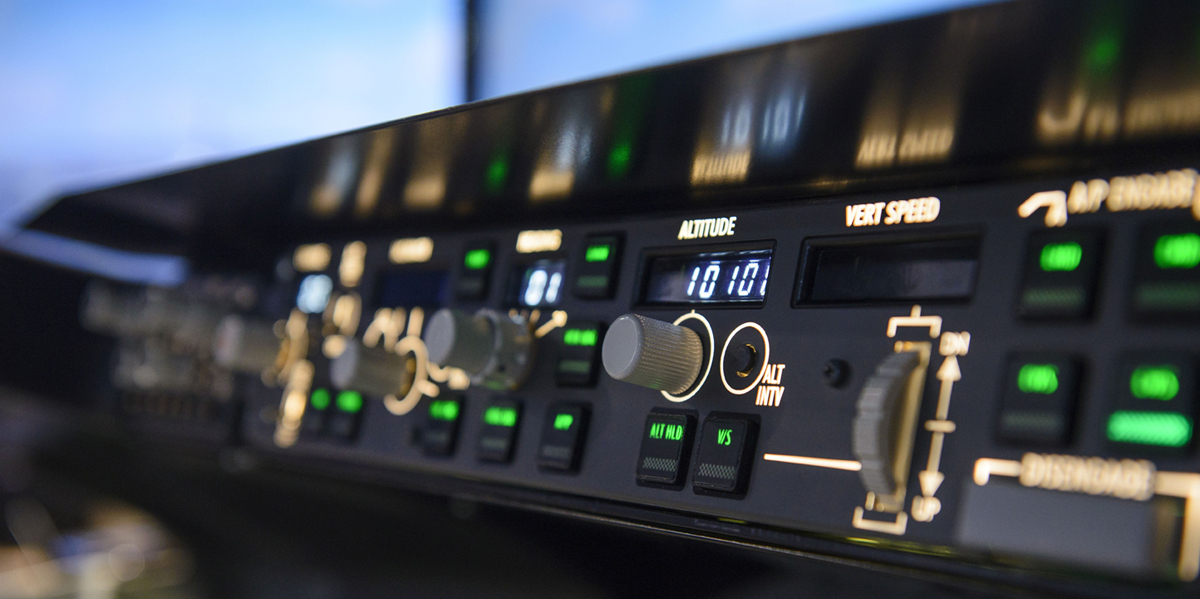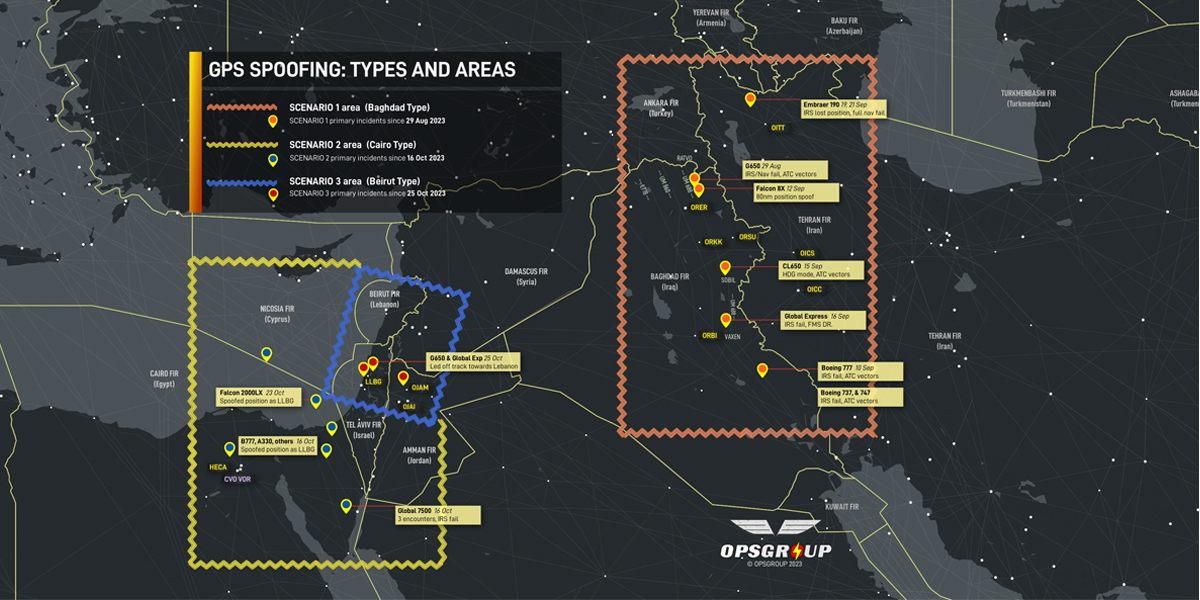Does your pilot know where their plane is? It seems like a basic question but it's increasingly hard for many to answer. Spirent’s Peter Terry-Brown explains why, and what needs to be done about it

It might seem shocking that aviation - one of the most risk tested, regulated, and safety critical industries around might have a problem like this. Indeed, modern aircraft are glittering with devices and redundancies all meant to establish an aircraft's location and keep it safe.
Many of these devices are fundamentally reliant on the Global Position Systems (GPS) - a part of the Global Navigation Satellite System (GNSS) - which is based on triangulation from satellite signals. It is relied upon the world over for location services and is a fundamentally important system for aviation, affecting a range of on-board systems which flight crews need to establish where they are on the globe.
The rapid rise of GPS spoofing
Increasingly, aircraft are becoming the victims of spoofing attacks in which an adversary - normally operating from the ground - confuses an aircraft's GPS systems and provides inaccurate data on that aircrafts location. In fact, new research from the aviation advisory board OPSGROUP has found that GPS spoofing has risen by 400%.
Discussing the findings, the group noted that these attacks have also been able to alter onboard clocks, altering pilots’ ability to tell time as well as location. Commentators have even cited a case in which a GPS spoofing attack changed an aircraft's clock by years which grounded the plane for weeks while its clock was reset.
That’s just one example and these attacks cripple multiple onboard systems and processes onboard the aircraft: False GPS information can cause an autopilot to turn the plane in the wrong direction, confuse crew as to where the aircraft is and affect a variety of crucial aircraft systems which rely on GPS. These include the Enhanced Ground Proximity Warning System, Inertial Reference System (IRS), The Traffic Alert and Collision Avoidance System (TCAS), Automatic Dependent Surveillance–Broadcast (ADS-B), the HUD guidance systems and the transponders among others.

All of these systems are crucial in maintaining safety for the aircraft and GPS spoofing attacks don’t just affect these systems, but have knock-on effects on other systems and prompt aircrew to employ unnecessary work-arounds based on the attacks’ false information.
Caught in the crossfire
These are, perhaps unsurprisingly, exceedingly common around conflict zones. Various geo-political actors involved in a conflict will employ GPS spoofing techniques to confuse the drones and missiles that rely on GPS coordination to hit their targets. As OPSGROUP have noted, commercial aircraft have experienced exactly these kinds of problems over the Middle East and Eastern Europe.
Given the density of these incidents in the Middle East, the Middle East Air Navigation Planning and Implementation Regional Group (MIDANPIRG) - a part of the International Civil Aviation Organisation (ICAO) - met in Cairo last February to discuss the rise in GPS and GNSS spoofing attacks.
Their report references a number of testimonies given by flight crews whose aircraft have suffered these attacks. They note that “a new variety of GPS spoofing is being reported by crews, where the signal is sufficiently strong and of sufficient integrity to feed the aircraft systems.” In turn, this renders the IRS - a system which uses GPS and is central to aircraft navigation - useless within minutes, and quickly strips the aircraft of “all navigation capability.”
The report notes that in many such cases, flight crew have had to call out to Air Traffic Control (ATC) for radar vectors to actually navigate. The report goes on to cite a number of cases in the region, one in which an aircraft’s Flight Management System (FMS) was tricked into thinking it was 60 nautical miles off track; another in which an aircraft had to rely on ATC radar vectors to navigate the whole way to its destination and another which inadvertently entered Iranian airspace without clearance.
Confusion and distrust
Modern aircraft glitter with devices that are finely tuned to tell that aircraft where it is, what it's doing and how it's doing it - many of which rely on GPS. Furthermore, they’re also filled with backup systems - called redundancies - which can back up those processes when first-line devices fail.
One of the pernicious problems of GPS spoofing is that it is not immediately clear whether the reading that the pilot is being shown is accurate or not. In essence, it would be an easier problem to fix if a GPS spoofing attack actually made the GPS fail. In that case, a pilot would know to immediately fall back to redundancy. The problem here is not success or failure, it is the uncertainty that GPS spoofing introduces into otherwise trustworthy systems.
When these spoofing attacks hit an aircraft's receivers - they tell the pilots that the aircraft is somewhere it’s not. This can lead to those aircraft being pushed off course, generate false warnings on the flight deck, render the safety system useless, and create a high workload for flight crews.
In fact, OPSGROUP has tracked a precipitous growth from GPS spoofing attacks affecting around 200 flights a day in the first quarter of 2024, to 900 flights a day in the second quarter of the year. The problem is that - although pilots might suspect something might be wrong with their devices - they will have difficulty actually confirming those suspicions and going to one of their redundancies.

That’s the problem, but it's also the beginning of the solution too. There are useful tools for these cases, fortunately. GNSS testing and simulation systems can recreate the expected conditions of a flight with a multitude of spoofing scenarios enabling aircraft manufacturers to understand the impact of GPS Spoofing on their aircraft. Moreover, they can begin developing upgrades and new solutions that are more resilient to the attacks.
While manufacturers work in their labs to find new solutions, flight crews are still left dealing with the failed safety systems and operational impacts. New global GPS Spoofing detection and alerting services are now available that can help inform the flight crews and airline dispatch of active spoofing areas and even warn individual aircraft when they become spoofed or have residual system failures after exiting the area of spoofing.
Retaining trust in aviation
While the apparent rise in GPS and GNSS spoofing attacks is introducing risks to international aviation, crashes are not necessarily the biggest one. In order for a plane to crash, there would have to be simultaneous failure of multiple systems. That said, causing chaos and sapping trust in international aviation could have longer term and deeper implications.
International aviation is a key part of our globalised world but it rests on a bedrock of consumer trust, which is absolutely critical for its survival. That’s one of the reasons that it's one of the most regulated and public-opinion sensitive industries around.
Trust is one of the fundamental selling points of aviation and customers need to know that - when they buy a seat on an airplane, they’re going to remain safe throughout their journey. Without that fundamental trust, airlines risk alienating consumers.
Boeing has seen this in recent months. After an engineering failure on a Boeing plane, consumer trust in the brand dropped precipitously. One survey from Morning Consult found that trust in the brand had dropped by 14 points in the wake of the panel blowout incident on the Boeing 737 Max.
If international aviation relies on the trust of its customers, then GPS spoofing puts that trust under grave risk. The aviation industry needs to adjust to this new threat landscape or risk alienating those customers for fear of their own safety.
Peter Terry-Brown is , General Manager, Positioning and Timing Business Unit, Spirent.
Subscribe to our newsletter
Stay updated on the latest technology, innovation product arrivals and exciting offers to your inbox.
Newsletter

